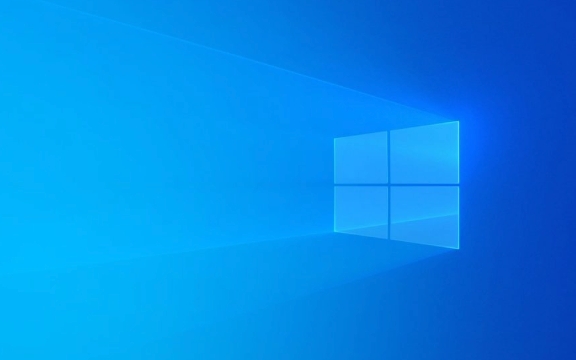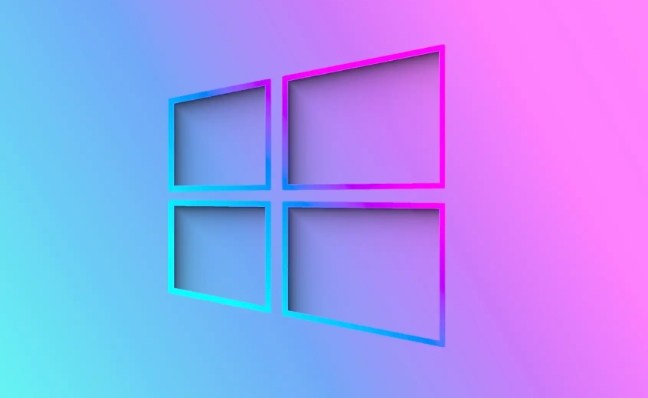 System Tutorial
System Tutorial
 Windows Series
Windows Series
 How to use the cipher /w command to wipe free space on a drive in Windows
How to use the cipher /w command to wipe free space on a drive in Windows
How to use the cipher /w command to wipe free space on a drive in Windows
Jul 30, 2025 am 04:45 AMThe cipher /w command securely wipes free space on an NTFS drive by overwriting it in three passes: first with zeros (0x00), then ones (0xFF), and finally random characters, making file recovery extremely difficult. To use it, open Command Prompt as Administrator, then run cipher /w:C: (replacing C: with the target drive letter). The process takes significant time depending on free space—100 GB may take over 30 minutes—and shows no progress bar. It only affects deleted files’ free space, not existing files, and requires an NTFS-formatted drive. On SSDs, effectiveness is reduced due to TRIM and wear leveling; for higher security, use BitLocker encryption followed by format, manufacturer tools, or diskpart clean with /p option. While not military-grade, cipher /w is a free and effective method for basic data sanitization on HDDs.

The /w switch in the Cipher command is a built-in Windows tool that securely wipes the free space on a drive, making it much harder to recover previously deleted files. This is useful for privacy and security, especially before disposing of or repurposing a drive.

Here’s how to use cipher /w to wipe free space:
What Does cipher /w Do?
When you delete a file in Windows, the data isn’t actually erased—it’s just marked as "available" space. Tools can recover that data until it’s overwritten. The cipher /w:C command (for example) overwrites all free space on drive C: with three passes:

- First pass: Writes
0x00(all zeros) - Second pass: Writes
0xFF(all ones) - Third pass: Writes random characters
This complies with basic data sanitization standards and helps prevent file recovery.
Step-by-Step: Using cipher /w
-
Open Command Prompt as Administrator

- Press
Win S, type cmd - Right-click Command Prompt and select Run as administrator
- Press
-
Run the cipher /w command
- Type the following, replacing
C:with your target drive letter:cipher /w:C:
- Example:
cipher /w:D:
- Type the following, replacing
-
Wait for the process to complete
- This can take a long time, depending on how much free space is on the drive.
- For example, wiping 100 GB of free space might take 30 minutes.
- You’ll see no progress bar—just wait until the command prompt returns.
?? Note: The drive must be formatted with NTFS.
cipher /wwon’t work on FAT32 or exFAT drives.
Important Considerations
- Only affects free space: It does not erase files currently on the drive—only the space marked as "available."
- SSDs vs HDDs: On SSDs, this method may be less effective due to wear leveling and TRIM. It’s still useful, but full drive encryption (like BitLocker) or hardware-based secure erase is better for SSDs.
- Disk space required: The drive must have enough free space to allow the overwrite process. If the drive is nearly full, free up space first.
- System performance: The process is resource-intensive. Avoid heavy usage during the wipe.
Alternative Secure Erase Methods (For SSDs or Sensitive Data)
If you're dealing with an SSD or need higher security:
- Use BitLocker Drive Encryption and then format (encrypt-then-erase method)
- Use manufacturer tools (e.g., Samsung Magician, Intel SSD Toolbox)
- Use
diskpart cleanorformatwith the/p(passes) option for full overwrites
Using cipher /w is a simple, no-cost way to help protect your privacy on NTFS drives. It's not military-grade, but it's effective for most users wanting to securely clear deleted data. Just remember: patience is key—it takes time.
The above is the detailed content of How to use the cipher /w command to wipe free space on a drive in Windows. For more information, please follow other related articles on the PHP Chinese website!

Hot AI Tools

Undress AI Tool
Undress images for free

Undresser.AI Undress
AI-powered app for creating realistic nude photos

AI Clothes Remover
Online AI tool for removing clothes from photos.

Clothoff.io
AI clothes remover

Video Face Swap
Swap faces in any video effortlessly with our completely free AI face swap tool!

Hot Article

Hot Tools

Notepad++7.3.1
Easy-to-use and free code editor

SublimeText3 Chinese version
Chinese version, very easy to use

Zend Studio 13.0.1
Powerful PHP integrated development environment

Dreamweaver CS6
Visual web development tools

SublimeText3 Mac version
God-level code editing software (SublimeText3)
 How to Change Font Color on Desktop Icons (Windows 11)
Jul 07, 2025 pm 12:07 PM
How to Change Font Color on Desktop Icons (Windows 11)
Jul 07, 2025 pm 12:07 PM
If you're having trouble reading your desktop icons' text or simply want to personalize your desktop look, you may be looking for a way to change the font color on desktop icons in Windows 11. Unfortunately, Windows 11 doesn't offer an easy built-in
 Fixed Windows 11 Google Chrome not opening
Jul 08, 2025 pm 02:36 PM
Fixed Windows 11 Google Chrome not opening
Jul 08, 2025 pm 02:36 PM
Fixed Windows 11 Google Chrome not opening Google Chrome is the most popular browser right now, but even it sometimes requires help to open on Windows. Then follow the on-screen instructions to complete the process. After completing the above steps, launch Google Chrome again to see if it works properly now. 5. Delete Chrome User Profile If you are still having problems, it may be time to delete Chrome User Profile. This will delete all your personal information, so be sure to back up all relevant data. Typically, you delete the Chrome user profile through the browser itself. But given that you can't open it, here's another way: Turn on Windo
 How to fix second monitor not detected in Windows?
Jul 12, 2025 am 02:27 AM
How to fix second monitor not detected in Windows?
Jul 12, 2025 am 02:27 AM
When Windows cannot detect a second monitor, first check whether the physical connection is normal, including power supply, cable plug-in and interface compatibility, and try to replace the cable or adapter; secondly, update or reinstall the graphics card driver through the Device Manager, and roll back the driver version if necessary; then manually click "Detection" in the display settings to identify the monitor to confirm whether it is correctly identified by the system; finally check whether the monitor input source is switched to the corresponding interface, and confirm whether the graphics card output port connected to the cable is correct. Following the above steps to check in turn, most dual-screen recognition problems can usually be solved.
 Want to Build an Everyday Work Desktop? Get a Mini PC Instead
Jul 08, 2025 am 06:03 AM
Want to Build an Everyday Work Desktop? Get a Mini PC Instead
Jul 08, 2025 am 06:03 AM
Mini PCs have undergone
 Fixed the failure to upload files in Windows Google Chrome
Jul 08, 2025 pm 02:33 PM
Fixed the failure to upload files in Windows Google Chrome
Jul 08, 2025 pm 02:33 PM
Have problems uploading files in Google Chrome? This may be annoying, right? Whether you are attaching documents to emails, sharing images on social media, or submitting important files for work or school, a smooth file upload process is crucial. So, it can be frustrating if your file uploads continue to fail in Chrome on Windows PC. If you're not ready to give up your favorite browser, here are some tips for fixes that can't upload files on Windows Google Chrome 1. Start with Universal Repair Before we learn about any advanced troubleshooting tips, it's best to try some of the basic solutions mentioned below. Troubleshooting Internet connection issues: Internet connection
 How to clear the print queue in Windows?
Jul 11, 2025 am 02:19 AM
How to clear the print queue in Windows?
Jul 11, 2025 am 02:19 AM
When encountering the problem of printing task stuck, clearing the print queue and restarting the PrintSpooler service is an effective solution. First, open the "Device and Printer" interface to find the corresponding printer, right-click the task and select "Cancel" to clear a single task, or click "Cancel all documents" to clear the queue at one time; if the queue is inaccessible, press Win R to enter services.msc to open the service list, find "PrintSpooler" and stop it before starting the service. If necessary, you can manually delete the residual files under the C:\Windows\System32\spool\PRINTERS path to completely solve the problem.
 How to run Command Prompt as an administrator in Windows 10?
Jul 05, 2025 am 02:31 AM
How to run Command Prompt as an administrator in Windows 10?
Jul 05, 2025 am 02:31 AM
To run command prompts as administrator, the most direct way is to search through the Start menu and right-click "Run as administrator"; secondly, use the Win X shortcut menu to select "Command Prompt (Administrator)" or "Windows Terminal (Administrator)"; you can also open the run window through Win R and enter cmd and press Ctrl Shift Enter to force running as administrator; in addition, you can set shortcut properties to achieve automatic running as administrator. All the above methods require administrator permission and confirmation through UAC. Pay attention to security risks during operation.







